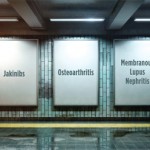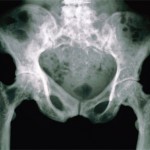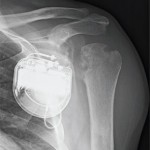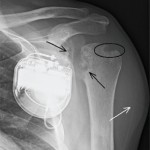I found your recent article, “To Terminate or Not to Terminate?” (The Rheumatologist, April 2015), very relevant to my practice. The hospital system I practice in, Summa Health, Akron, Ohio, has two rheumatology groups with active hospital privileges. My partner and I are both part-time female rheumatologists who work for a hospital group, Summa Physicians…

Polymyalgia Rheumatica Misdiagnosis Results in Positive Outcome
In late February 2011, a 68-year-old woman visited the rheumatology outpatient clinic. She had been congenitally healthy and had been a field athlete in her early days. Beginning in early January 2011, she became aware of pain in her neck and both shoulders, with pain spreading to her lower back and thighs. She also became…

The ACR’s State-of-the-Art Clinical Symposium: Experts Discuss Jakinibs, Osteoarthritis, Membranous Lupus Nephritis
CHICAGO—With the approval of the Jak inhibitors (i.e., jakinibs) tofacitinib and ruxolitinib—and others being investigated—rheumatologists need to arm themselves with an understanding of these drugs so they can think critically when evaluating them and deciding how to use them, said John O’Shea, MD, chief of the Molecular Immunology and Inflammation Branch of and scientific director…

The ACR’s State-of-the-Art Clinical Symposium: Rheumatic, Malignant Disease Mimics Call for Diligence from Rheumatologists
CHICAGO—David Daikh, MD, PhD, professor of medicine at the University of California San Francisco and chief of the Rheumatology Division at the San Francisco VA Medical Center, said the overlap between malignant disease and rheumatic disease means rheumatologists should stay aware that more may be going on than just a rheumatic disorder. He made his…

The ACR’s State-of-the-Art Clinical Symposium: Rheumatologists Weigh in on Tough-to-Treat Cases, Paget’s Disease, Imaging
CHICAGO—A 49-year-old woman has had RA for eight years. She has a rheumatoid factor reading of 35, an aCCP reading of 160, erythrocyte sedimentation rate of 42, plus erosions. She has been on methotrexate. She tried etanercept for six months, but then it stopped working. She was on 40 mg of adalimumab weekly, but it…

Rheumatologist Alain Alvarez, MD, Brings Passion for Dance to Medical Practice
There can be a rhythm to rheumatology. At least that’s what Alain Alvarez, MD, can sometimes find. Listening, assessing, helping. It can be a successful dance when doctor and patient become partners, hoping to lead each other forward. When you consider this, it might be little surprise that Dr. Alvarez is also a dance teacher….

Diagnostic Imaging in Patient with Atraumatic Left Shoulder Pain: History
Editor’s note: In this recurring feature, we first present a series of images (this page) for your review, and then a brief discussion of the findings and diagnosis. Before you turn to the discussion, examine these images carefully and draw your own conclusions. History A 56-year-old man with end-stage renal disease on peritoneal dialysis presents…

Diagnostic Imaging in Patient with Atraumatic Left Shoulder Pain: Findings
View the question. Findings/Diagnosis The AP radiograph of the left shoulder (see Figure 1) shows erosions of the proximal humeral and glenoid articular surfaces (black arrows) without joint-space narrowing. There is a well-defined marginal erosion with overhanging edge at the junction of the proximal humeral articular surface and rotator cuff insertion on the greater tuberosity (ellipse)….
Rheumatology Coding Corner Question: Sacroiliac Injection with Office Visit
Coding for SI Injections with Office Visit A female patient previously diagnosed with sacroiliitis and ankylosing spondylitis returns to the office for a follow-up visit. The patient reports her lower back has been stiff and swollen for the past couple of weeks. She is currently on celecoxib and ranitidine, and mentions that she had some…
Rheumatology Coding Corner Answer: Sacroiliac Injection with Office Visit
CPT codes: 99214-25, 27096, J3301 x1 ICD-9: 720.2, 720.0, 787.02 ICD-10: M46.1*, M45.9*, R11.0 This encounter is coded as 99214 because it includes: Detailed history; Comprehensive examination—eight systems counted; and Medical decision making—moderate complexity (established problem, new problem with no additional workup; new prescription drug ordered). Keep in mind, the CT guidance is an inclusive…
- « Previous Page
- 1
- …
- 45
- 46
- 47
- 48
- 49
- …
- 86
- Next Page »